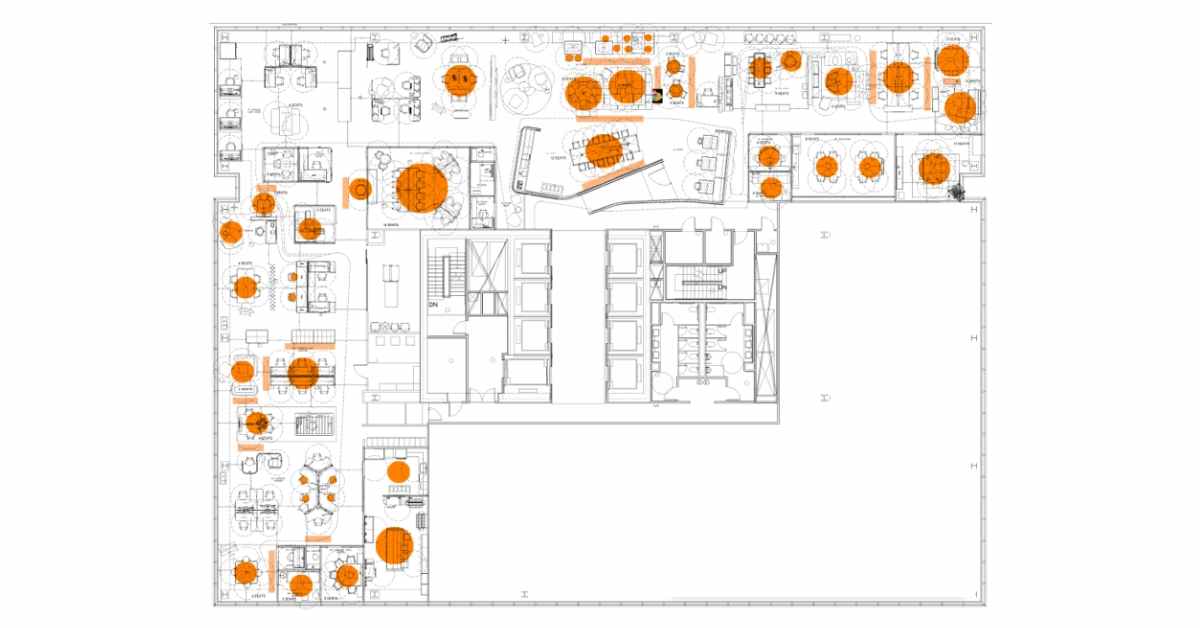To support new COVID-19 protocols in safety, communication, and collaboration, organizations must create a minimum 6ft distancing between people in open workstations, meeting spaces, cafés and lounge spaces, which lowers the overall density of the space. With these requirements forcing organizations to modify their workspaces, some are wondering how the cultural design of their space will impact the number of lost space capacity.
They may be asking themselves questions like: since our organization considers ourselves to have a progressive culture and space and that we often meet in open collaboration areas, will our loss of space be greater compared to an organization that has a classic culture with more individual workstations?
To explore this workplace density question, let’s review the percent of seating loss for three different cultural floor plans: classic, balanced, and progressive.
Workplace culture
To understand why these floor plans vary, we’ll break down company culture at a high level. Classic culture is process-oriented, formalized with strong communication and decision-making methods. Balanced culture is market-oriented and represents the intersection of strategy and execution. Progressive culture is adhocracy-oriented, and often a team-first culture.
Each of these cultures follows unique floor plans that impact the design and allocation of dedicated and shared spaces for working, meeting, and socializing.
We conducted a space analysis of a classic, balanced, and progressive floor plan, identifying hot zones in which social distancing does not meet CDC requirements, which will directly contribute to space loss:
Classic floor plan:

Classic key descriptors:
- Work: All spaces are assigned (workstations, private offices)
- Meet: Meetings happen in conference rooms
- Socialize: Socializing happens in the lunchroom
Density impact:
- Head Count: 32
- Initial Seating Capacity: 96
- Seating Capacity Loss: 35
- Seating Capacity % Loss: 36%
Balanced floor plan:

Balanced key descriptors:
- Work: Most spaces are assigned, with a few shared (phone booths, enclaves)
- Meet: Meetings happen in a variety of huddle rooms, conference rooms, and some breakout areas
- Socialize: Socializing happens in the work café
Density impact:
- Head Count: 31
- Initial Seating Capacity: 108
- Seating Capacity Loss: 57
- Seating Capacity % Loss: 53%
Progressive floor plan:

Progressive key descriptors:
- Work: Most spaces are unassigned, with a few assigned
- Meet: Meetings can happen anywhere in the space
- Socialize: Socializing can happen anywhere
Density impact:
- Head Count: 94
- Initial Seating Capacity: 220
- Seating Capacity Loss: 77
- Seating Capacity % Loss: 35%
Space analysis
After analyzing each floor plan to identify hot zones and seating removal to maintain CDC compliance, we determined that with more open collaboration areas, you might have a higher percent total loss, but each space design is different.

Even though the company with a progressive cultural space had a higher head count and more open collaboration seating than the company with a balanced culture, it didn’t have as high of a percent total loss. While the chart above illustrates that organizations with more open collaboration/free address spaces will have a higher loss, it doesn’t necessarily mean the type of culture you have will determine your overall total percent loss. Because all space designs are unique, it’s important to complete a thorough space analysis of your own floor plan to adhere to CDC social distancing.
Workplace Re-Entry Program
To support our customers in understanding how their spaces need to be modified, we have created a Workplace Re-Entry Program. This guide includes space analysis services in addition to other recommendations for a more comprehensive re-entry plan.




